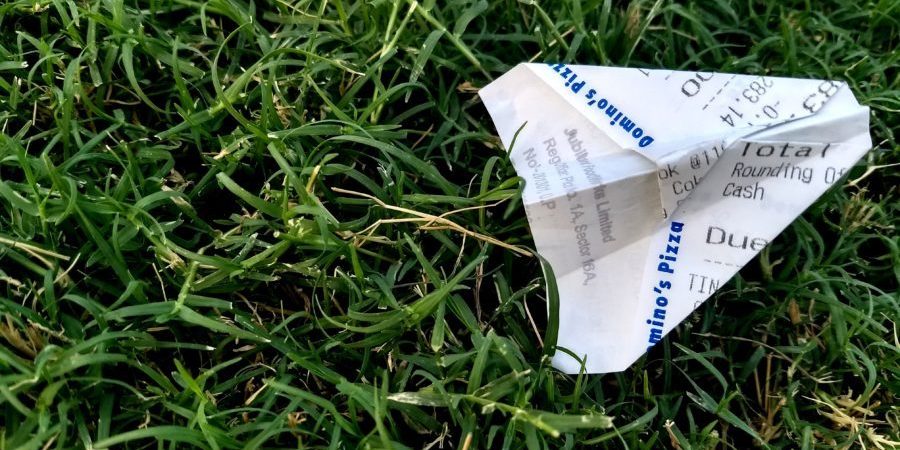Keep Your Receipts!
Posted on 14th November 2019 at 17:46
When starting your own business there are a hundred and one things to think about, so it’s no wonder that the smaller aspects can easily get lost among the chaos. James Caan once stated that “the biggest rookie error I’ve seen startups make is the reluctance to track transactions.” In other words, not keeping their receipts.
There was a time when businesses had shoeboxes full of receipts and piles of scrap paper they were dreading having to look through when the time came. However, as with most things in the accountancy world now, it’s all turning digital.
Why would I want to keep my receipts?
Receipts are evidence of your expenses and, whether you’re a sole trader or a limited company, you can claim back your expenses. By doing this, you are effectively reducing the profits of your company thus meaning you will have less tax to pay on the remaining profits.
One vital part of this however is that you cannot claim just for anything, there are rules and guidelines in place to closely regulate what you can and cannot claim. In order for HMRC to keep track of this and to ensure expenses are being claimed fairly, HMRC demand that you keep “evidence”, or in this case, receipts.
Do I really have to keep all my receipts?
In short, yes. HMRC requires a limited company to keep their receipts for a whopping six years and a sole trader for a marginally less painful five years. This is to allow HMRC time to investigate your accounts should a reason arise to do so, thus if they do come calling it is vital you have the evidence available to back up your expenses claims. However, six years is a long time to keep a pile of paper tucked away in a cupboard, so today we’ll look at a better way to go about it.
What is the best way to store my receipts?
Although it’s tempting to simply throw away your receipts, doing so can cause you a lot of trouble down the line.
However, anyone who has kept hold of a receipt for even a short time knows that these little pieces of paper are thin, liable to tear and quick to fade.
A faded and illegible receipt, regardless of how well you take care of it, is still not enough to satisfy the requirements set out by HMRC.
With that in mind, what options are available?
Option 1: Paper receipts in a shoebox.
Let’s skip this one, we know this is a disaster waiting to happen.
Option 2: Batch scanning digital copies.
In recent years HMRC has begun to encourage companies to scan their receipts and keep a digital copy of them online. Despite popular opinion, HMRC will indeed accept digital copies and will not require the original receipt.
One method to do this is by scanning each receipt separately and storing them on your hard drive. Scanning everything one by one at the end of a year is torturous though, so if possible we’d advise against this.
Option 3: Scan as you go.
By far one of our favourite features of phones nowadays is the ability to not only take photo’s of receipts but also to make tidy and clear pdf scans as you go. In the iPhone notes app for example, you have the option to “scan documents” which then opens up your camera, searches for the edges of the receipt automatically and snaps an accurate pdf quickly and easily. Just like that you have a copy of the receipt which will be uploaded to the cloud and automatically tagged with the date it was taken. This is by far the easiest way to go about keeping an accurate record of your receipts and, if you can make this a habit from day one, can save a lot of time and effort down the line.
An alternative to this could be taking photographs as normal and uploading to your Google Drive (this comes with generous free capacity for most users) and using their built in “convert to pdf” feature.
What if HMRC chooses to investigate my expenses?
If you have followed the above recommendations and stored your expenses online, then you have nothing to worry about. That being said however, it can still be a time-consuming nightmare to search through years of receipts. How do you remember the exact date and time of that train journey? How about when you purchased those office supplies? Having to look back through your years of paperwork, whether physically or in a digital database can be frustrating. As such, Moulds & Co Accountants Ltd would always recommend keeping an expenses record that will allow you to see quickly and easily just what expenses you have claimed, where they came from and when.
At Moulds & Co, we love Xero and one of the reasons why is down to their receipts scanning feature making life so simple for our clients. Xero’s receipt scanning app automatically scans your photo’s, extracts the information there and stores this in a handy expenses dashboard.
Not everyone wants to use or pay for this feature though, so another alternative is to download a simple Excel based expenses tracker from online, many of which are available for free. Utilising this free tracker alongside the option 3 method outlined above will ensure that your receipts are kept safe and easily trackable.
How we can help
To make sure that you start things off on the right foot, Moulds & Co is here to help. To speak to a member of the team about expenses concerns or any other questions you may have, contact us today on 01937 584188.
Help this post grow!
Share this post:

